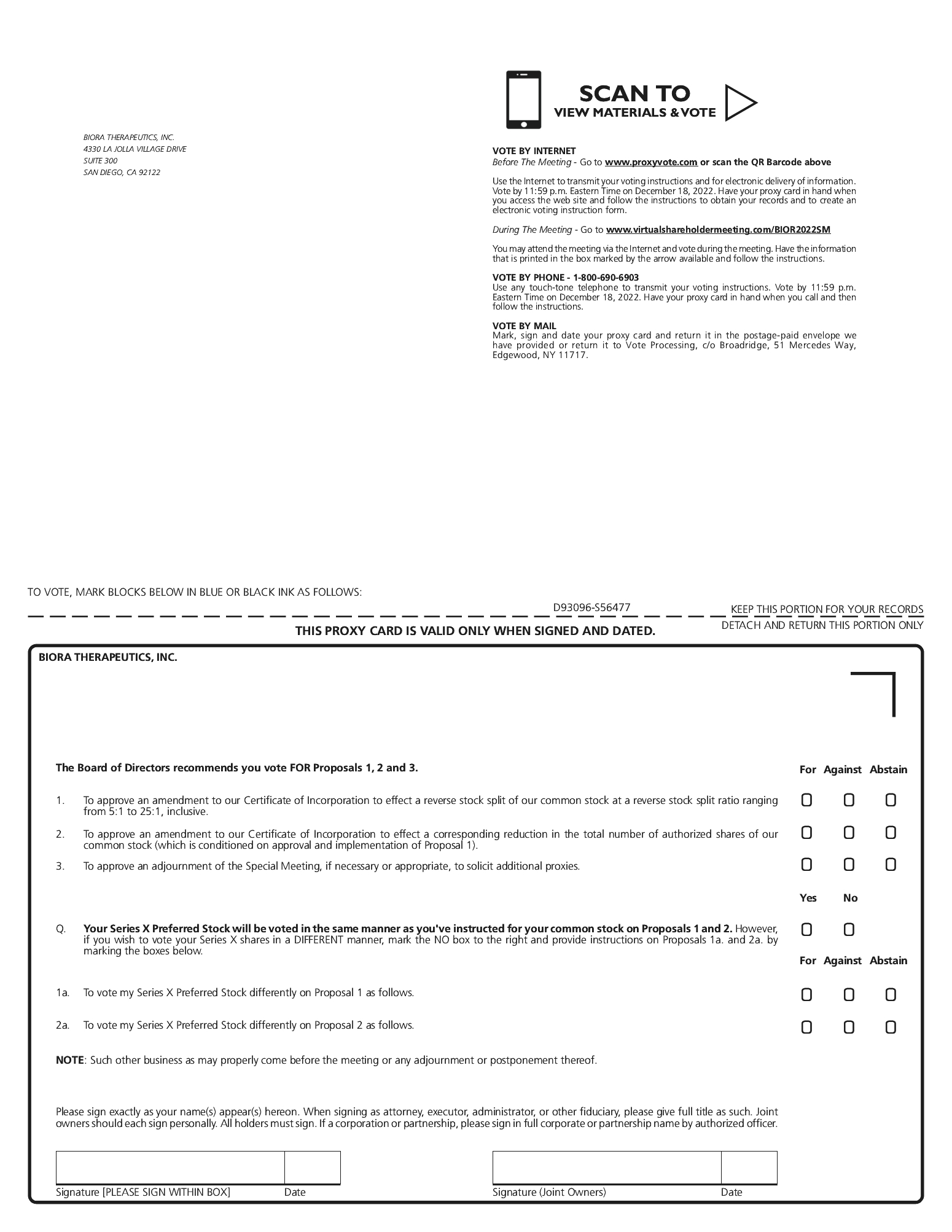Cash Payment In Lieu of Fractional Shares
No fractional shares of common stock will be issued as a result of the Reverse Stock Split. In lieu of any fractional shares to which a stockholder of record would otherwise be entitled, the Company will pay cash (without interest and subject to withholding taxes, as applicable) equal to such fraction multiplied by the closing price of the common stock on Nasdaq on the first business day immediately preceding the Effective Date (as adjusted in good faith by the Company to account for the reverse stock split ratio). After the Effective Date, a stockholder otherwise entitled to a fractional interest will not have any voting, dividend or other rights with respect to such fractional interest, except to receive such cash payment.
Additionally, under the escheat laws of the various jurisdictions where stockholders may reside, where the Company is domiciled or where the cash payment may be deposited, sums due for fractional interests that are not timely claimed after the Effective Date may be required to be paid to the designated agent for such jurisdiction, unless correspondence has been received by us or the transfer agent concerning ownership of such funds within the specified time period. Thereafter, stockholders otherwise entitled to receive such payments would need to seek them directly from the state to which they were paid.
As of November 23, 2022, there were 52 common stockholders of record. After the Effective Date, stockholders owning less than a whole share will no longer be stockholders. We do not intend for this transaction to be the first step in a series of plans or proposals of a “going private transaction” within the meaning of Rule 13e-3 of the Exchange Act.
Procedure for Effecting a Reverse Stock Split
Beneficial holders of common stock. Stockholders who hold their shares through a bank, broker or other nominee will be treated in the same manner as registered stockholders who hold their shares in their names. Banks, brokers and other nominees will be instructed to effect the Reverse Stock Split for beneficial owners of such shares. However, banks, brokers or other nominees may implement different procedures than those to be followed by registered stockholders for processing the Reverse Stock Split, particularly with respect to the treatment of fractional shares. Stockholders whose shares of common stock are held in the name of a bank, broker or other nominee are encouraged to contact their bank, broker or other nominee with any questions regarding the procedures for implementing the Reverse Stock Split with respect to their shares.
Registered holders of common stock. Registered stockholders hold shares electronically in book-entry form under the direct registration system (i.e., do not have stock certificates evidencing their share ownership but instead have a statement reflecting the number of shares registered in their accounts) and, as a result, do not need to take any action to receive post-split shares. If they are entitled to receive post-split shares, they will automatically receive, at their address of record, a transaction statement indicating the number of post-split shares held following the Effective Date.
Material U.S. Federal Income Tax Consequences
The following is a summary of material U.S. federal income tax consequences of a Reverse Stock Split to stockholders. This summary is based on the provisions of the Internal Revenue Code of 1986, as amended (the “Code”), U.S. Treasury regulations, administrative rulings and judicial decisions, all as in effect on the date of this filing, and all of which are subject to change or differing interpretations, possibly with retroactive effect. Any such change or differing interpretation could affect the tax consequences described below.
We have not sought and will not seek an opinion of counsel or ruling from the Internal Revenue Service (the “IRS”) with respect to the statements made and the conclusions reached in the following summary, and there can be no assurance that the IRS or a court will agree with such statements and conclusions.
This summary is limited to stockholders that are U.S. holders, as defined below, and that hold our common stock as a capital asset (generally, property held for investment).
This summary is for general information only and does not address all U.S. federal income tax considerations that may be applicable to a holder’s particular circumstances or to holders that may be subject to special tax rules, such as, for example, brokers and dealers in securities, currencies or commodities, banks and financial institutions, regulated investment companies, real estate investment trusts, expatriates, tax-exempt entities, governmental organizations, traders in securities that elect to use a mark-to-market method of accounting



 Tweet
Tweet Share
Share


